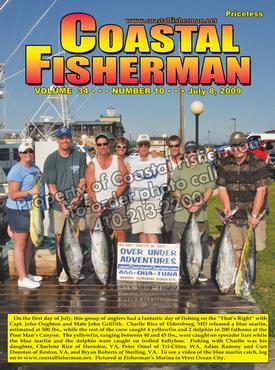


Article by Pat Schrawder
 EMERGENCY CALLING AND YOUR VHF
EMERGENCY CALLING AND YOUR VHF
As VHF communication was designed to be used, anyone who is in imminent danger on their boat is supposed to call the Coast Guard on channel 16. The procedure to be followed is to say “mayday, mayday, mayday” and then state the following:
• This is ………… (name of your vessel)
• Your call sign or other identification such as registration or documentation number
• Your exact location
• A description of your boat
• The number of persons on board
• The precise nature of your problem
• Any special problems
In recent years, another helpful system has been developed to help those in need of assistance and it is referred to as DSC or digital selective calling. All VHF radios manufactured today are required to have this feature. You will see it on your VHF as a red window that is marked “distress”. This is not to be confused with another button on the radio that may be marked DSC. Although broadly referred to as DSC, they actually perform two distinct functions, one being the distress call in an emergency and the other being a means of communicating back and forth between selected vessels or groups of vessels.
In order for the system to work as designed, you must apply to the FCC for your unique identifying number known as your MMSI (Maritime Mobile Service Identity). This can easily
be done on-line at the following address: http://www.boatus.com/mmsi. If you do not currently have an “FRN” (federal registration number), you will be instructed to get one first. It is free and only takes a few minutes. You can proceed to the FCC License Manager page at https://wireless2.fcc.gov/UlsEntry/licManager/login.jsp to obtain yours. Then go to the Boat US site to get your MMSI number that will need to be programmed into your VHF radio. There should be instructions in the manual that came with your radio telling you how to do this. A simple connection between your VHF and your GPS or loran will complete the electronic and paperwork components for the system to operate fully functional.
Once that is complete, you have both distress and digital selective calling available to you. If you have an emergency, you should lift the cover on your radio marked “distress” and push and hold the button for five seconds until you hear a confirmation tone that your call has transmitted. Your call is sent over channel 70 to any available DSC compatible radio within range of your vessel. Your radio waits to hear an electronic acknowledgement on channel 70 from a coast guard station. After the acknowledgement is received, your radio automatically switches to channel 16 and you can proceed to talk to the Coast Guard with details of your problem.
The improved feature of this system is that the Coast Guard has already automatically been sent your MMSI number, along with your precise location and the information about your vessel. In the event that you cannot communicate for long or at all, the Coast Guard has all the necessary information to proceed with a search and rescue mission.
The other feature of DSC that is considered a convenience rather than a safety item, is the selective calling. You can preprogram your VHF with several DSC ID’s along with their names of other boats that you normally wish to communicate with and the VHF channel you wish to use for that communication. They can also be separated into groups of numbers. Using your non-emergency DSC button, you can selectively call one or more vessels. The VHF will use channel 70 just as before but the signal will only go to the boat(s) you select. The VHF will again wait for the received acknowledgement and will then switch to the channel you selected when you programmed that person’s boat into your VHF.
Some VHF have the ability to monitor two channels independently so that you can “stand by” on channel 70 for DSC calls while operating on another channel. Using DSC is actually not difficult once you get it set up and understand its operation. For more precise details on setting up and using DSC on your own radio, you should consult your operator’s manual. If you have a radio with BSC, please take the time to put its features into effect. If you ever have to use them, you’ll be glad you did.
Pat Schrawder and her husband Larry are owners of L&L Marine Electronics on Golf Course Road in West Ocean City.